Light therapy is having a moment and, consequently, there are a ton of at-home skincare devices and tools—all utilizing different types of light like red, blue, green, amber, even purple—on the market. But before you go ahead and add any old light therapy device to your cart, know that one type of light is superior: red light. “Low-level therapy devices that emit red light and infrared light are the most effective option for skin rejuvenation and wound healing,” says dermatologist (and big red light therapy fan) Heather Rogers, MD. Keep reading for everything you need to know about the benefits of red light therapy—plus the five best red light therapy devices to try at home.
What are the benefits of red light therapy?
Red light therapy has a ton of beauty benefits, but the science behind how it works is a bit technical. Dr. Rogers explains it really well: “When exposed to red and infrared wavelengths, the cells in our bodies absorb energy from the light, become more efficient in their use of oxygen, and are better able to make cell fuel, or ATP. With more ATP, cells become more active and better at doing their jobs, whether that be DNA repair, cell turnover, collagen production, or calming inflammation,” says Dr. Rogers.
Because red light therapy promotes cellular turnover and collagen production, it’s able to “minimize the appearance of fine lines, wrinkles, acne scars, and other skin texture concerns,” says dermatologist Dendy Engelman, MD. “It also holds anti-inflammatory properties to reduce puffiness and calm irritated skin,” she says.
As for hair growth, red light therapy can help increase cell turnover, stimulate blood flow and circulation, and create an optimal environment to encourage healthy hair growth, explains Dr. Engelman.
What’s the difference between red and infrared light?
Many popular red light therapy and LED devices utilize the benefits of both red and infrared light. “Red light focuses on cell turnover in the dermis and epidermis, addressing skin tone, texture, fine lines, and wrinkles, while near-infrared light penetrates deeper than red light, targeting circulation and inflammation in deeper tissues,” explains Dr. Engelman. “These two are often used synergistically in many red light therapy devices to provide a comprehensive treatment that targets multiple concerns at once,” she adds.
What’s the best red light therapy device?
There are so many different red light therapy devices to choose from, including LED face mask, wands, panels, and helmets. Dr. Rogers is a fan of Omnilux and Celluma (she prefers full face or the large panel devices over handheld ones to ensure the area you’re using it on receives uniform treatment), while Dr. Engelman likes the Solawave Wand and Dr. Dennis Gross's SpectraLite Mask.
“The Solawave Wand is a fantastic handheld, travel-friendly device that uses red light therapy, galvanic current, massage, and gentle warmth to address a number of skin concerns,” says Dr. Engelman. “Dr. Dennis Gross SpectraLite Mask is another FDA-cleared, clinically-proven device that strategically applies red and blue light combination therapy to address both acne and anti-aging concerns. I love its hands-free design and the fact that it only requires three minutes of use per day,” she says. And if you’re looking for a red light device for hair growth, try HigherDOSE’s hat. It’s designed to help with hair thinning and shedding and couldn’t be easier to use, IMO.
How often should you do red light therapy?
Red light therapy is a bit of a time commitment. “Most devices require daily use for at least a month to see results,” says Dr. Rogers. The good news is that most treatments are fairly quick (usually 10 minutes of less), so it’s easy to incorporate into your daily skincare routine. And unlike some other trendy beauty tools and at-home treatments, it’s pretty hard to overdo it with red light therapy devices making negative side effects relatively uncommon.
How do you use red light therapy devices?
Exactly how you use your red light therapy device will depend on your specific device’s instructions but there are a few general rules to keep in mind, according to Dr. Rogers:
- For best outcomes the device needs to be touching or nearly touching your skin to ensure the energy is being fully absorbed.
- Most devices say to use them on clean skin, but products like face moisturizer, vitamin C serum, and retinol serum are fine to apply before using your red light therapy device.
- Tinted sunscreen and some makeup products can block visible light, so it’s best to avoid applying them before a treatment.
- The heat generated by some red light therapy devices can exacerbate dry skin, so consider applying face moisturizer before and/or after to tolerate the treatment better.
The bottom line:
Red light therapy is good for your skin. Like, really good! And studies suggest it’s really good for your scalp and hair too. Don’t expect results from a device overnight, but with consistent use, most people who use red light therapy facial devices report brighter, firmer skin and those who use the head helmets tout the hair growth benefits too.
This article was originally published on Cosmopolitan on August 13, 2024. Read the full article here: https://www.cosmopolitan.com/style-beauty/beauty/a61836669/red-light-therapy-benefits/
